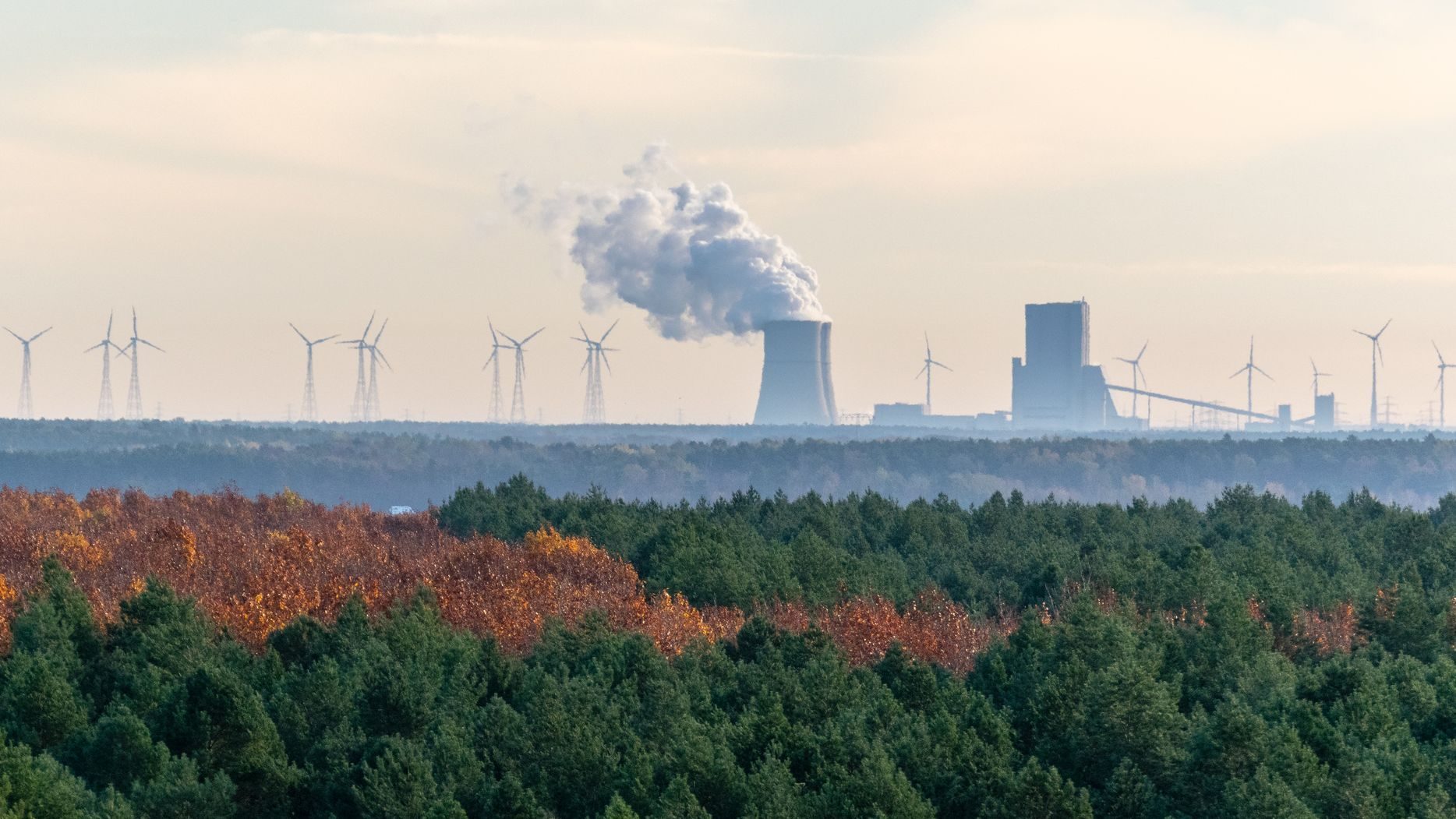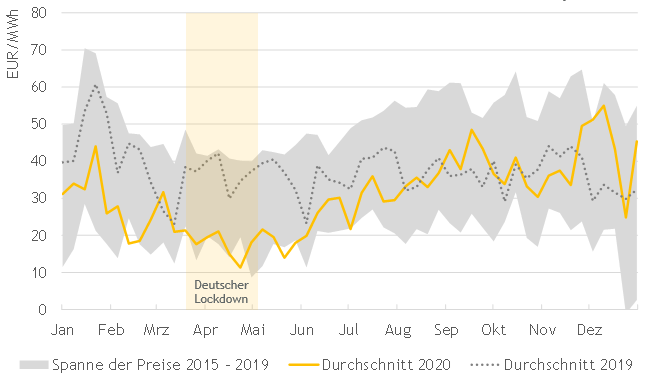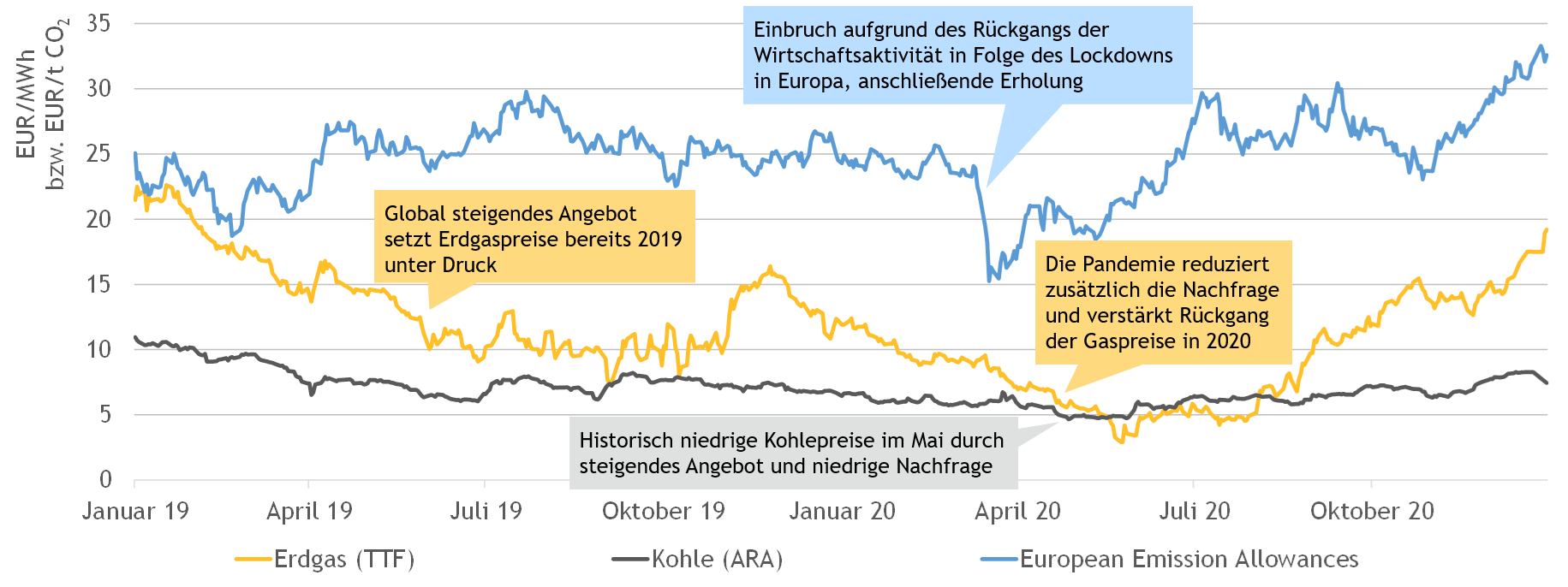
The Covid 19 pandemic and resulting measures in Germany and around the world are putting wholesale electricity prices under pressure. In 2020, the average wholesale electricity price was significantly lower than in 2019, at EUR 30.47/MWh, more than EUR 7/MWh lower than the previous year. No less than three factors had a price-dampening effect on electricity prices in 2020: lower fuel costs, lower electricity demand, and more electricity from renewable sources.
In the brief analysis “The Electricity Price in Times of Covid-19”, researchers Dr. Simon Schulte, Fabian Arnold, and Konstantin Gruber of the Institute of Energy Economics (EWI) at the University of Cologne examine how the wholesale electricity price developed in 2020, which factors influenced the price development, and what role the Covid-19 pandemic played. The analysis is based, among other things, on the EWI Merit Order Tool 2021, which can be used to determine the deployment order of conventional power plants based on their marginal costs.

The national measures to contain the pandemic and the global decline in economic output resulted in a drop in electricity demand in Germany of just under 16 TWh (3.2 percent) in 2020. Demand collapsed in April in particular, at the time of the first lockdown in Germany, but remained low beyond that. It was not until August that demand rose again to the previous year’s level. The November/December lockdown had little impact on electricity demand compared with the spring.
Due to the global drop in demand as a result of the measures taken against the Covid 19 pandemic, prices for coal and gas energy sources fell in 2020. Gas prices had already come under pressure in 2019 due to large supplies. In 2020, they reached new lows. The price of CO2 allowances also collapsed in the spring as a result of the European lockdown measures, but remained stable on average for the year due to rapid recovery.
Lower fuel prices reduce the marginal costs of power plants and thus their deployment order in the electricity market, the so-called merit order. “Due to the decline in fuel prices, the average merit order of conventional power plants flattened again significantly in 2020 compared to 2019. Gas-and-steam combined cycle power plants benefited from low gas prices and were even able to move ahead of lignite-fired power plants in the merit order at times,” says Dr. Simon Schulte, manager at EWI.

At the same time, electricity generation from renewables in 2020 was around 9.2 TWh higher than in the previous year. Both onshore wind (+3.5%) and offshore (+11.1%) and photovoltaic (+9.3%) generation continued to increase in 2020 due to favorable weather conditions and the expansion of generation capacity.
Since February 2, 2021, the third version of the EWI Merit Order Tool 2021 is available for download.